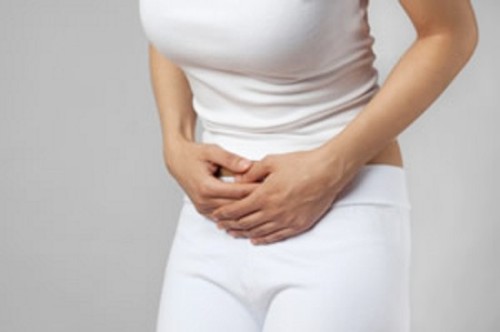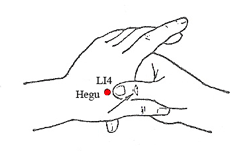 If you are trying to conceive, it can seem like an eternity between when you ovulate and when you are finally able to use an at home pregnancy test. The problem is during this two week waiting period, you are only (potentially) about four weeks pregnant so you can’t take an accurate test yet. Many women look for possible symptoms of implantation to give them a clue that they are pregnant. Cramping can be one of these symptoms, but it can also be a hassle at times.
If you are trying to conceive, it can seem like an eternity between when you ovulate and when you are finally able to use an at home pregnancy test. The problem is during this two week waiting period, you are only (potentially) about four weeks pregnant so you can’t take an accurate test yet. Many women look for possible symptoms of implantation to give them a clue that they are pregnant. Cramping can be one of these symptoms, but it can also be a hassle at times.
When Does Implantation Cramping Occur?
Not all women experience cramping but those that do will notice it when the implantation occurs within their womb. The cramping will occur at the same time as implantation, between six and twelve days following ovulation. At this point, your new fetus will be attached to your uterine cavity.
Some people say that implantation cramps are nature’s way of hinting to the expectant mother that she has conceived. This method has been in place long before scientific pregnancy tests. Because of this, implantation cramps can be a reason for anticipation, happiness, or nervousness.
How Does the Cramping Feel?
Implantation cramps feel like light pricking or pulling pains and occur in your lower abdomen around a week before you are due to get your period. The cramps are due to some of your uterine mucous membrane melting at the implantation site as this allows the fertilized egg to better attach to the uterine wall. Some women will have occasional cramps lasting on and off for a few days while others will only experience a single episode of them.
How to Get Relief from Implantation Cramping
Remember that your implantation cramps will never last for long as the implantation process won’t last for more than one to three days. You should not take painkillers for these cramps. Instead, lie down and lift your legs to help the pain pass. You should also stay hydrated and get plenty of rest. In some cases meditation or yoga may help as well.
If you ever experience severe cramping during pregnancy or the cramping lasts more than several days or takes place after you get a positive result on a pregnancy test, you should visit your doctor. Most of the time this will be minor and due to natural things like your uterus growing or you passing gas, but there are also other serious possibilities including urinary tract infections, preeclampsia, placental abruption, preterm labor, and miscarriage.
Experience of Others
“I am trying to conceive for the first time so I have no experience with this. The nurse told me that some of my symptoms might indicate implantation, but I’m not sure. I am currently two days late for my period so when I got mild cramps on my lower right side a few days ago, I figured it was period related. But then my period didn’t come and I had two more sharp pains in the same spot. They only lasted a few seconds before going away but today there is a constant (slightly achy) pressure in my lower middle. The nurse thought it might be implantation. I took apregnancy test the next day and had a doctor’s appointment in a few days. Turned out that I got pregnant.”
What Are Other Implantation Symptoms?
An additional symptom of implantation is spotting or bleeding and this happens in around 30% of the cases. The bleeding happens when the egg burrows itself into your uterine wall and will appear as light brown, red, or pink blood in very small quantities. Most of the time, this bleeding will happen 6 to 12 days after you ovulate and fertilization occurs. This is about one or two days after the blastocyst arrives in the uterus. You shouldn’t mistake this implantation spotting for your period as it will happen earlier and with a flow that is significantly lighter.
Additional symptoms of early pregnancy can include fatigue, breast changes, frequent urination, nausea, and mood swings. You may also experience a drop in temperature 7 to 10 days after you ovulate. Keep in mind, however, that most of these symptoms will only appear later on during pregnancy after around six to eight weeks.
The following video explains more on implantation cramping and other types of cramping during pregnancy:
When to Take the Pregnancy Test
Even if you do experience implantation bleeding, you cannot confirm whether or not you conceived with a positive result from a pregnancy test. The exact time that you should take a pregnancy test depends greatly on the specific test. All of them will work by measuring the quantity of hCG (human chorionic gonadotrophin), but the tests you take at home will measure it in your urine while those the doctor uses measure it in your blood.
Home Pregnancy Test
You are recommended to take a pregnant test at home one week after you miss your period.
You will notice that pregnancy tests can vary greatly in sensitivity ranging from 10mIU/mL to 40 mIU/mL. If the test has a lower number for its sensitivity, you can use it sooner with the earliest tests working around four days earlier than your missed period.
If you take the test too soon, your urine may not have a high enough concentration of hCG yet, giving you a false negative result and leading to stress. Other reasons that your test might be negative would be if you aren’t pregnant or you simply ovulated later on than you thought you did, meaning you aren’t as far along as thought.
In fact, 10% of women may have extremely low hCG levels when they miss their period. Because of this, if you still don’t have your period in three days, repeat the test as this will give more time for the hormones to build up.
Blood Test
Your doctor can give you a blood test to detect hCG. These are more sensitive, working as early as between six and eight days after you ovulate. Despite this, most doctors won’t offer the blood test until you have missed your period and only if you need to be tested for medical reasons.
Early pregnancy symptoms like implantation cramping, combined with tests, will definitely comfirm if you are pregnant or not.






